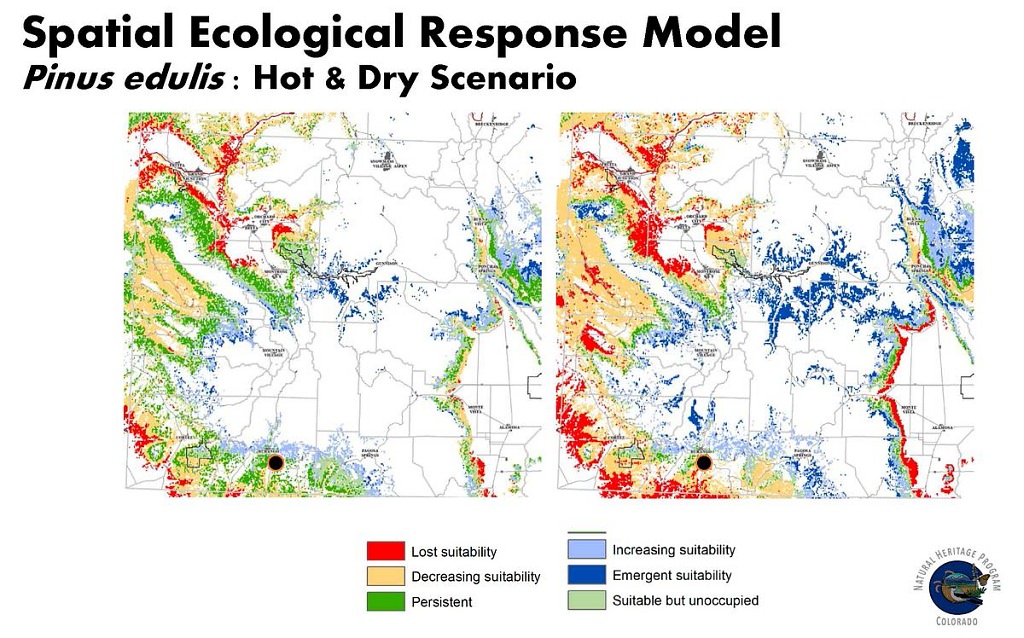The BLM administers 8.4 million acres of land and more than 29 million acres of sub‐surface mineral estate in Colorado. CNHP collaborated with BLM scientists and managers to evaluate vulnerability to: climate change for ecosystems, animals, and rare plants of concern for BLM in Colorado; model future habitat suitability for pinyon pine, two juniper species, and six cold-water fish species; and refine our statewide vulnerability assessment for select ecological systems in the San Luis Valley. Our maps, reports, and other deliverables were created to help BLM managers identify places where action may mitigate the effects of climate change, recognize potential novel conditions that may require additional analysis, and characterize uncertainties inherent in the process. View our reports and summary of findings.

Social Science Counterpart: Colleagues at NREL and Western State Colorado University conducted parallel studies investigating vulnerabilities of social-ecological systems, including ranching and recreation-based livelihoods. We are pleased to share the results of their work with the Little Snake and Gunnison Field Offices here.
Left-click to view, and right-click to download.
Below are links to Assessment for Colorado Bureau of Land Management Reports
- Adaptation in the face of environmental change: supporting information for Colorado BLM
- Climate Change Vulnerability Assessment for Colorado Bureau of Land Management
- Ecological Vulnerability Assessment: Summary of Finding [Fact Sheet]
- Modeling Ecological Response To Support Adaptation Strategies: Summary of Finding [Fact Sheet]
- Modeling Fish Habitat Response To Support Climate Adaptation Strategies: Summary of Finding [Fact Sheet]
Below are links to Social Science Report and Fact Sheets
- Colorado Bureau of Land Management: Social Vulnerability Assessment
- Colorado Bureau of Land Management: Social Climate Vulnerability Assessment (Summary of Findings - Field Office Case Studies)
- Colorado Bureau of Land Management: Social Climate Vulnerability Assessment (Summary of Findings - Review of BLM Documents And Plans)
- Colorado Bureau of Land Management: Social Climate Vulnerability Assessment (Summary of Findings - Indicators Analysis)
Below are links to Colorado Bureau of Land Management San Luis Valley Field Office Reports
CNHP worked closely with CPW and the North Central Climate Science Center to conduct a statewide habitat vulnerability assessment for Colorado’s new State Wildlife Action Plan. This work earned us an Honorable Mention in the 2017 Climate Adaptation Leadership Awards for Natural Resources. Of the 18 habitat targets evaluated, three were assigned high overall vulnerability ranks, nine were assigned moderate overall vulnerability ranks, and six were assigned low overall vulnerability ranks.

Left-click to view, and right-click to download.
Below are links to Colorado Wildlife Action Plan Enhancement Reports
CNHP has evaluated rare plants, animals, and ecosystems for vulnerability to climate change across southwest Colorado.

Left-click to view, and right-click to download.
Below are links to Assessments in Southwest Colorado Reports
We compared outcomes of three vulnerability assessments focused on major vegetation types in Colorado and categorized sources of disagreements between the assessments in a 2017 paper in Regional Environmental Change. Read the article here.





